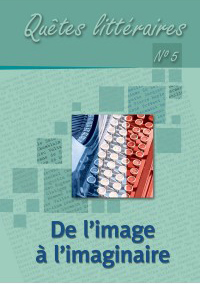Miroir en cuivre et plaque daguerrienne : autour de Salammbô de Gustave Flaubert
Copper mirror and daguerreotype plate: around Gustave Flaubert’s Salammbô
Author(s): Agnieszka KocikSubject(s): Language and Literature Studies, Literary Texts, Photography, Studies of Literature, Comparative Study of Literature, French Literature, Theory of Literature
Published by: Katolicki Uniwersytet Lubelski Jana Pawła II, Instytut Filologii Romańskiej & Wydawnictwo Werset
Keywords: copper mirror; daguerreotype; epistemic metaphor; Salammbô; the City of Copper
Summary/Abstract: The paper brings a motif of Salammbô’s preparations undertaken prior encountering Mathô. The scene becomes a motive for analysis of the paradigm of relation between a copper mirror and a daguerreotype plate. Both artefacts are made of the same matter. Being tools for discovering reality and outpouring into an imaginary world at the same time, both provide special dimension to the visual experience. Finally, both are epistemic metaphors. Since second half of 19th century copper finds a new place in mythology of the industrial object. Vast presence of copper in Flaubert’s Carthage impacts historical and oriental picturesqueness. Does Carthage resemble the legendary City of Copper?
Journal: Quêtes littéraires
- Issue Year: 2015
- Issue No: 5
- Page Range: 55-64
- Page Count: 10
- Language: French

